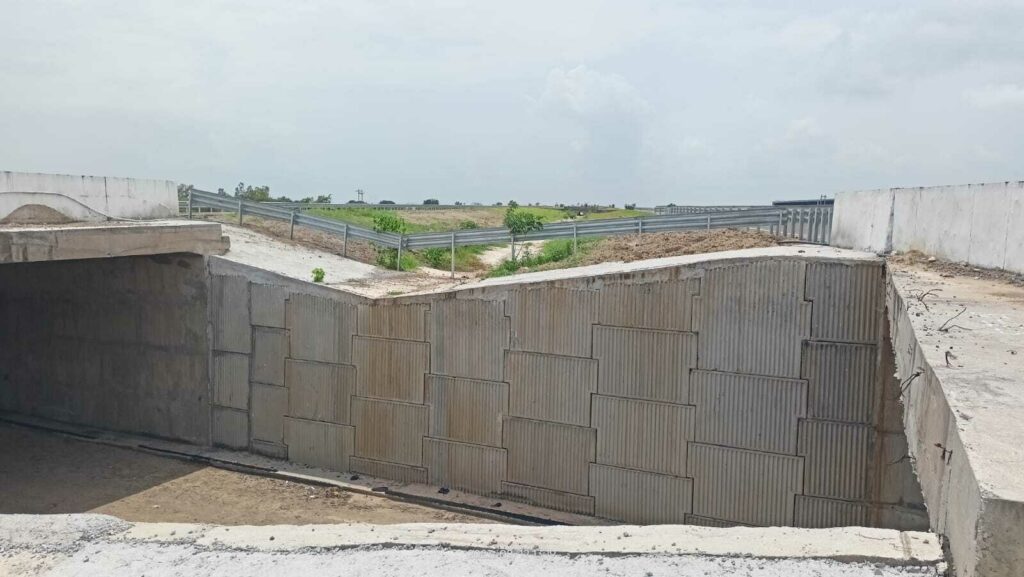Culvert headwall
What is culvert headwall?
The construction industry has evolved remarkably. The latest technologies, new structures, and convenient interiors have changed every facet of how a structure should look. Even though modernity has taken over this industry, some structures are built keeping nature and its ecosystem in mind. One such structure, a culvert headwall, preserves the natural ecosystem. It is constructed over a flowing water body or an area where animals or wildlife freely roam, ensuring the authenticity of their ecosystem remains intact. In this blog, we will further delve into knowing more about the culvert headwall.
A culvert headwall is a structure located at the outlet of the culvert. A culvert is a pipe or channel that allows water, vehicles, wildlife, or pedestrians to cross from beneath the road or rail line to avoid accidents. The headwall is constructed as a protective barrier around the culvert to provide proper support. This structure stabilises the soil around the culvert, avoiding any shifting or displacement of the foundation.

Reason for constructing a culvert headwall
- One of the main reasons for constructing this protective wall is providing structural support to the culvert. The headwall enables the culvert to bear the load of the road or rail traffic above it.
- It also prevents soil erosion around the culvert, which has a constant flow of water. It creates a protective layer surrounding the culvert, reducing the chances of potential soil scouring.
- The headwall channels water into the culvert. This prevents water from scattering and unnecessarily creating a new path to flow, preventing water accumulation and flooding.
Types of culvert headwalls
Culvert headwalls are available in different types. The factors that define their type can depend on the requirements of a specific project, site conditions and availability of the raw material. Listed below are the different types:
- Wing walls: These angle walls extend from the inlet to the outlet. Generally triangular or trapezoidal in shape, wing walls enable direct water inflow. They effectively prevent soil erosion by smoothly transitioning the culvert water flow with the natural flow.
- Mitered end walls: These walls are inclined which certainly helps the water to flow smoothly towards a predetermined direction. These walls are usually constructed towards the end of the culvert.
- Sloped headwalls: These headwalls effectively prevent soil erosion, provide stability and reduce the hydraulic impact on the water inflow or outflow. These are sloped and designed to provide a proper and gentle slope to the natural water flow.
- Box-type headwalls: Although these walls require more construction material, they are more strong, stable and protected than other headwall types. They are vertical walls constructed around the culvert.
Factors to consider while constructing a headwall
Constructing a headwall around the culvert significantly creates a protective layer around it. Not only this, it also enables the water to flow without causing any damage to the surroundings. With all these advantages, it is crucial to consider some important factors to consider while constructing a headwall. Here are some factors listed below:
- Design: Selecting the appropriate design for the headwall depends on several factors. These factors are the size of the culvert, anticipated water inflow and outflow, soil pressure, terrain conditions, surroundings, expected loads, and type of the culvert. It is important to keep in mind the load-bearing capacity while selecting the design. The headwall should also be designed to effectively prevent soil erosion and significant water damage in the surroundings.
- Material selection: Another important factor to consider is material selection. Culvert headwalls are constructed using several materials like gravel, stone, concrete or metal. The most recommended choice is concrete. This is because concrete offers more durability, stability and strength. In some cases, large stone headwalls are also constructed by interlocking the stones or using the masonry technique. These headwalls give an aesthetic look. Metal headwalls are also constructed using corrugated steel mainly used for installing temporary culverts.
- Erosion control: Constant water flow can cause soil erosion. It is important to consider that headwalls installed should protect the surrounding soil from getting eroded. To achieve this, the usage of erosion-resistant material, geosynthetic material or vegetation can be implied.
A culvert is a significant structure that enables the smooth flow of water underneath itself and efficiently supports the rail or road traffic above it. However, the headwall constructed around it is like a cherry on top, as it effectively creates a protective layer around the culvert that prevents soil erosion, corrosion, water accumulation and unwanted damage to the culvert walls. In a nutshell, culvert headwalls are an important structure that prevents the natural ecosystem from getting destroyed.
